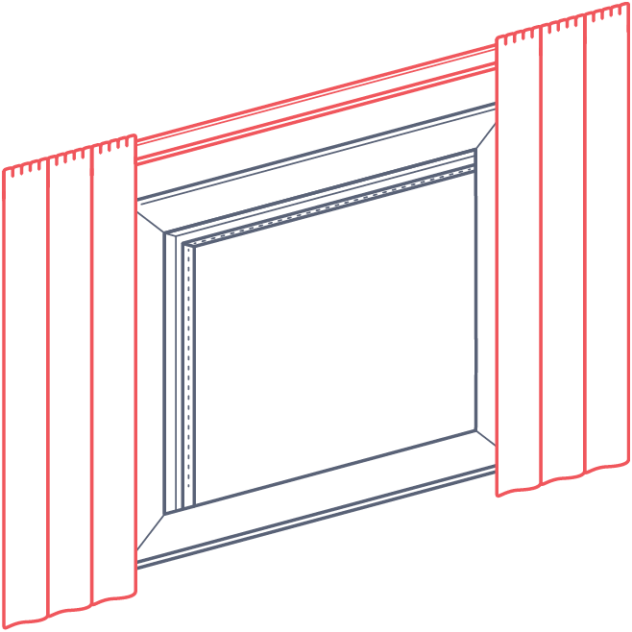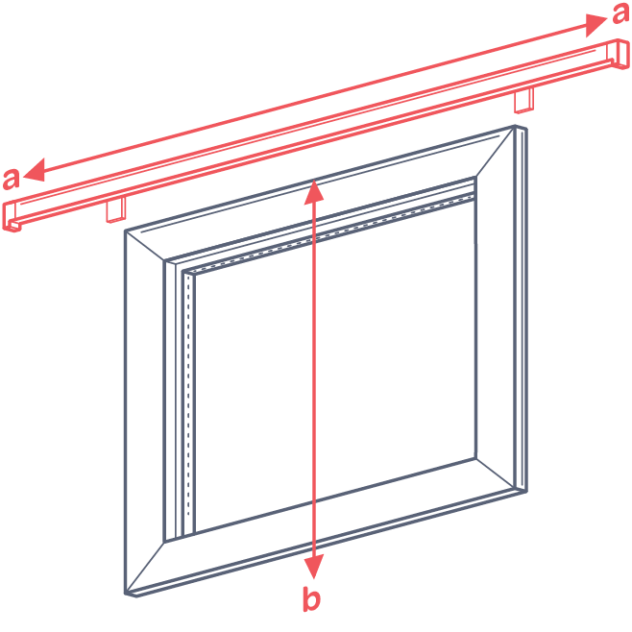Curtains measuring guide
Follow this method to measure your windows for custom-made curtains, including sheer, blockout and thermal.
You will need:
- A metal tape measure that reads in millimetres (mm) and is long enough to reach across your entire window
- Our measuring sheet
- Pencil or pen
Things to consider
- Do you want a pair of curtains that will sit either side of the window and close at the centre, or a single curtain that is drawn from one side to the other?
- Look for obstructions in the way of your curtains (eg. furniture, wall heaters, etc.) and adjust your width and/or drop to suit.
How to measure

How to measure
- We use a ‘width x drop’ method to make sizing your curtains easy. The width will be your track length and the drop will depend where you hang your track and where you want your curtains to finish.
- When purchasing custom-made curtains, you only need to provide the track width and drop and we will calculate the optimum amount of fabric to use specific to your track width and pleating style.

Width (a)
Measure your curtain track or rod from end to end. For rods, measure from inside any finials (the decorative end pieces). If you do not have an existing track or rod, see our instructions for measuring below.
Drop (b)
Measure from the top of your curtain track or the underside of your rod, to where you would like the curtains to finish, and record this as your curtain drop.
Options include:
- Below the sill, 200mm is a good rule of thumb
- To the floor
If dropping to the floor, consider these options:
- Deduct 5 - 10mm if you want your curtains to be floating and not quite touching the floor
- Leave as is to skim the floor
- Add 10 - 20mm to sit heavy and ensure greater heat retention
- Add 200mm so the excess fabric pools on the floor for a luxurious look
Measuring for tracks and rods
We recommend extending your track or rod past the side of your window to allow the curtains to stack o! the glass. This enables more light to enter the room, minimises fading at the edge of the curtain and gives the illusion of larger windows.
You will need to allow room to the side of the window where the curtain will stack when open.
For larger windows, and those with bulkier fabrics and linings, you will need more room for the curtain to stack. For smaller windows and lighter fabrics it will be less.
The measurement guide below is suitable for a standard window of 2,500mm width.
Measure the width of your window and add at least 600mm (300mm each side).
If stacking a single curtain all on one side add 600mm to your track length, but fit your track 50mm to one side of the window and 450-550mm to the stacking side.
Look out for any potential obstructions such as cupboards or heat pumps. If there is not enough wall space beside the window for stacking, measure what is available, and choose a pleat style that uses less fabric and therefore requires less stacking space, e.g. single pleat or reverse single pleat.
Where to fix your track or rod
- 100mm above the top of the window frame (recommended)
- Halfway between the top of the frame and the ceiling
- Just below the ceiling (creates the illusion of height, especially when curtains are drawn closed)
- At the top of the architrave or frame (recommended only when space above is limited)
Fullness and heading styles
Curtains have extra fabric to create “fullness” or “gather” when closed. This gather provides greater insulation and a softer looking finish at the window. The heading style you choose will dictate how much fullness your curtain has. See the chart below for more information:
- Single Pleat: 50-60%
- Double Pleat: 75-100%
- Triple Pleat: 110-120%
- Reverse Double Pleat: 75-100%
- Pencil Pleat: 80-100%
- S-fold: 75-100%